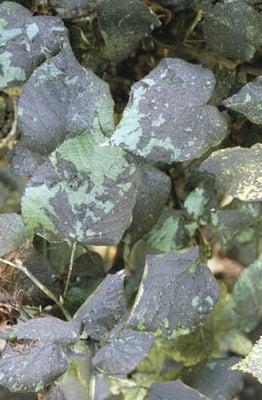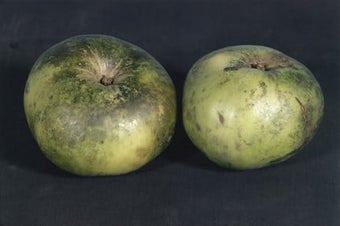
Quick facts
Common name - Sooty moulds
Scientific name - Many different species of fungi
Plants affected - Any. Growth may also occur on other objects such as garden furniture, paths, cars, etc.
Main symptoms - Superficial, dark brown or black fungal growth
Caused by - Fungi, growing on insect honeydew or plant exudates
Timing - During periods of plant growth and insect activity; may be year-round in conservatories and glasshouses
What are sooty moulds?
consist of a large number of different fungi producing dark growth and spores. Commonly found within sooty mould growth are species of Cladosporium and Alternaria, but there are many others. They grow on sugar-rich honeydew produced by -sucking insects as a result of their feeding activities, or occasionally on sugary exudates produced by the plant itself.
Symptoms
You may see the following symptoms:
- Black or dark brown, superficial fungal growth on the aerial parts of plants, particularly the upper leaf surfaces
- The amount of growth can vary from a fine soot-like or powdery deposit, to a thick sheet of growth that may crack or peel away from the leaf surface during dry conditions
- The growth can sometimes be washed away, leaving a healthy-looking leaf surface beneath
- -sucking insects such as aphids, scale insects, mealybugs or whiteflies can often be found on the plant, above the point where the sooty mould is growing
- In some cases these insects may occur on plants that overhang those affected with sooty mould
- Ants may also be seen in association with the sap-sucking insects
- Leaves, stems, fruit, etc. where the are growing are contaminated with sticky honeydew
Management
Non-chemical
- Wiping or sponging affected leaves and other plant parts with water is sometimes enough to remove the sooty mould growth. However, if the source of the problem is not dealt with then the growth will develop again
- Avoid adding strong soaps or detergents to the water as these can scorch foliage
- Lukewarm water can be more effective
- Heavy coverage can take some weeks or months to be washed away by rain even if the insect producing the honeydew is no longer present
Chemical
Chemical control of the sooty mould growth itself is not required. However, managing any -sucking insects responsible for the honeydew on which the mould is growing, will help reduce the problem
See our advice on these links for mangement informaion on aphids, scale insects, mealybugs and whiteflies, where these animals occur indoors we have further information on our indoor plants: sap feeders page.
Biology
are surface contaminants – they do not attack the plant directly. They require a nutrient source on which to grow, and this is most commonly the honeydew excreted by a number of -sucking insects (e.g. aphids, mealybugs, scale insects, whiteflies). Droplets of honeydew are shed by these insects and fall onto surfaces below where they are feeding. This is frequently the upper surface of leaves, but can also be stems, branches, fruit, etc., and also any other objects situated below.
Honeydew contains high levels of sugars and a range of other nutrients. The sooty mould fungi use these for growth. Sooty mould growth is most prevalent where air circulation is poor and high, providing periods of extended wetness (although heavy rain may sometimes wash the growth from the leaf surface).
Occasionally, sooty mould growth develops on sugary, sticky exudates produced by the leaves of the plant itself. Certain plants (e.g. some Cistus species) are more likely to produce such exudates.






